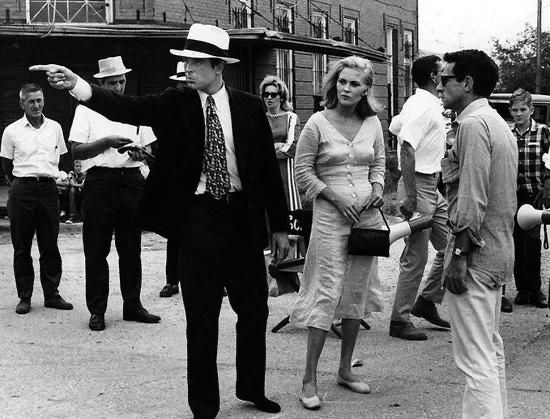The decline of the Hollywood studio system began in the late 1950s, after the Paramount Antitrust Case of 1948. This prohibited the studios from owning the cinemas in which their films were shown, and this greatly encouraged a rise in competition between the studios. This ultimately led to a much more diverse landscape of cinema in America, as each studio became influenced by the filmmaking techniques of other cultures, such as the French New Wave.
Alongside this, the rise of television of also contributed to the start of the New Hollywood era. During the 1950s, televisions became increasingly available due to their price steadily decreasing as the technology became cheaper to manufacture. As more households acquired a TV, the demand for television content increased and this led to an increase in the production of TV programmes. Television was a new and exciting form of entertainment, creating a new array of genres such as sitcoms and game shows. This ultimately resulted in a decline in popularity of cinemas as a form of entertainment, as families chose to watch films and TV from the comfort of their own home.
During the Golden Age of Hollywood, the studio system dominated the distribution of films that were shown in the cinema. Because of this, there was no opportunity for any independent films to be shown to American audiences. After the studios lost their power, independent filmmakers were now able to distribute their own films. This ultimately led to an emergence of new independent perspectives in the landscape of American cinema.
A significant development within the New Hollywood era was the rise of two systems working in parallel – independently produced films and studio produced films. Independent filmmakers, who had been exposed to films from around the world, often took advantage of cutting-edge technology such as 16mm film to produce their own low-budget productions that often experimented with the typical conventions of the prior American filmmaking landscape. These films usually had to be financed by relying on friends and colleagues of the filmmaker.
Simultaneously, the major film studios were producing more adventurous and nuanced films that challenged the status quo of the Classical Hollywood era. These films grew larger in both scale and budget, and were designed to appeal to a wide audience. This ultimately provided a dual filmmaking platform that broadened the cinematic diet of the American audience – viewers were able to simultaneously experience the unique and personal stories of the young independent filmmakers alongside experiencing the classic blockbuster entertainment that they had come to expect from Hollywood throughout the Golden Age.
Throughout this New Hollywood period, Arthur Penn was a prolific filmmaker who paved the way for the rise of independent cinema and the increasing influence of auteurs throughout the film industry. His film, Bonnie and Clyde (1967), was revolutionary in the way of challenging the conventions of the Hollywood studio system. Inspired by the French New Wave, Arthur Penn, alongside other visionary directors of this era, sought to create a film that did not shy away from a raw and violent portrayal of crime – a stark departure from the sanitised, formulaic style of storytelling that dominated the films of the Golden Age.
